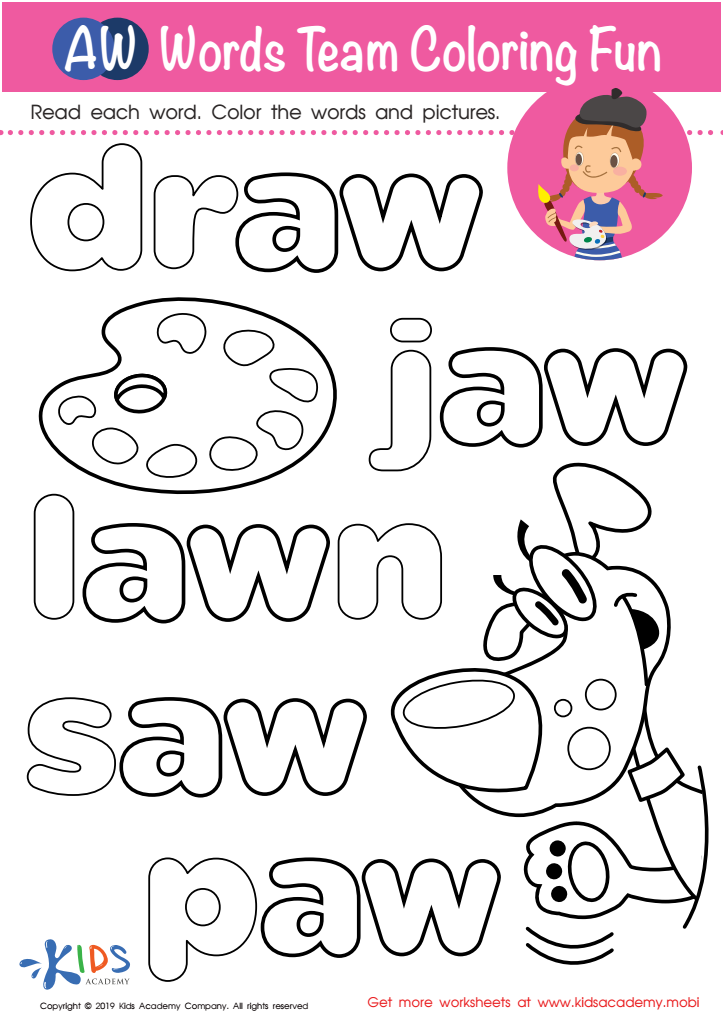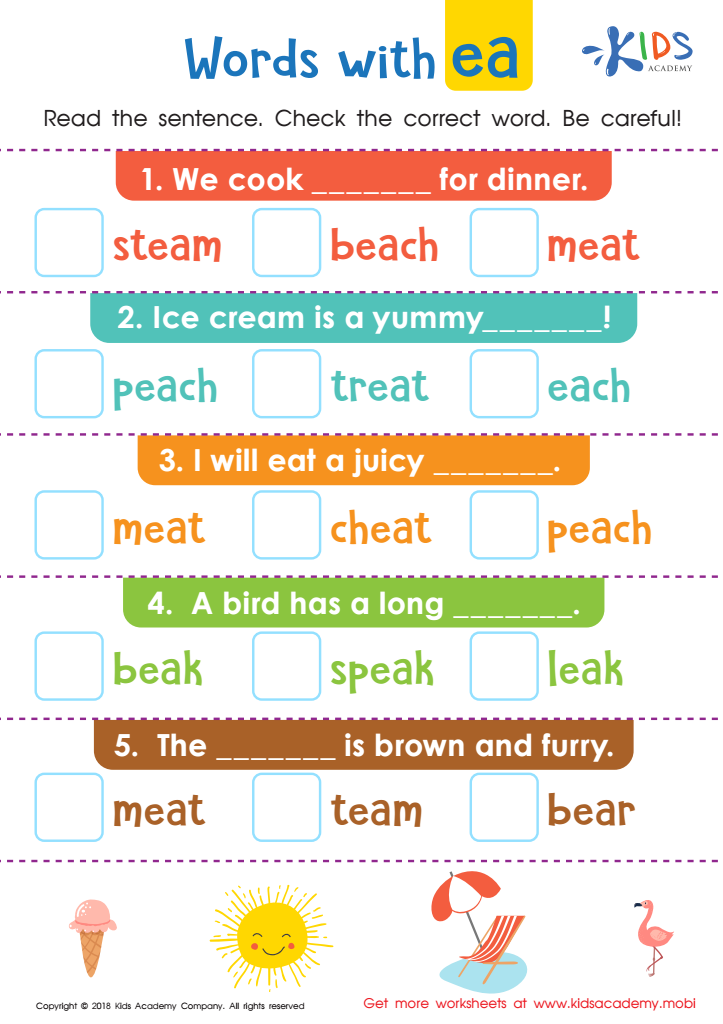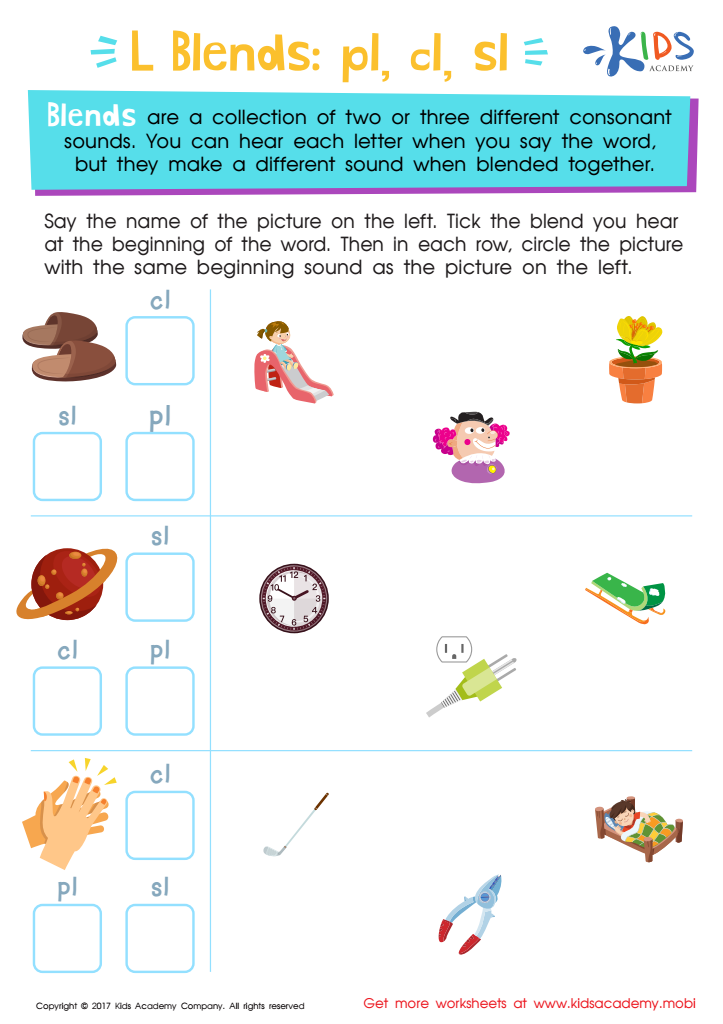Word Recognition Normal Two Letter Phonics Worksheets for Ages 3-7
5 filtered results
-
From - To
Discover our engaging Two Letter Phonics Worksheets designed for children ages 3-7, focused on enhancing word recognition skills. These printable resources feature vibrant images and simple, two-letter words to make learning enjoyable and effective. Each worksheet encourages young learners to connect sounds with corresponding letters, fostering early reading abilities. Activities are designed to promote constructive practices, helping children identify, read, and write basic words confidently. Perfect for home or classroom use, our worksheets provide a fun way to build foundational literacy skills while enjoying interactive learning experiences. Kickstart your child's reading journey with our specially crafted phonics worksheets today!


AW Words Team Coloring Fun Worksheet


Words with ea Worksheet


L Blends: "Pl", "Cl" and "Sl" Printable


Missing Digraph: Part 2 Worksheet


Consonant Blends: "Dr" and "Tr" Printable
Word recognition is a foundational skill in early literacy, crucial for young learners aged 3-7. Normal Two Letter Phonics plays a vital role during this developmental stage, laying the groundwork for reading fluency and comprehension. By mastering two-letter phonics, children can easily decode simple words, enhancing their confidence and engagement in reading activities.
Parents and teachers should care about this phonetic awareness because it promotes vocabulary development and reinforces the relationship between sounds and letters. Mastery of two-letter combinations fosters the recognition of common sight words and aids in the transition to more complex text, ensuring a smoother educational journey as children progress through grades.
Additionally, when children gain proficiency in these foundational skills, they are less likely to struggle with reading, which can impact their overall academic achievement. A solid grasp of two-letter phonics also supports language development, as it encourages children to experiment with word formation and understand basic spelling patterns.
Ultimately, by prioritizing Normal Two Letter Phonics, educators and parents invest in a child's reading success, nurturing a lifelong love for literature and enhancing their educational trajectory. The encouragement of these skills early on equips children with the necessary tools to thrive academically and socially in the years to come.
 Assign to My Students
Assign to My Students













